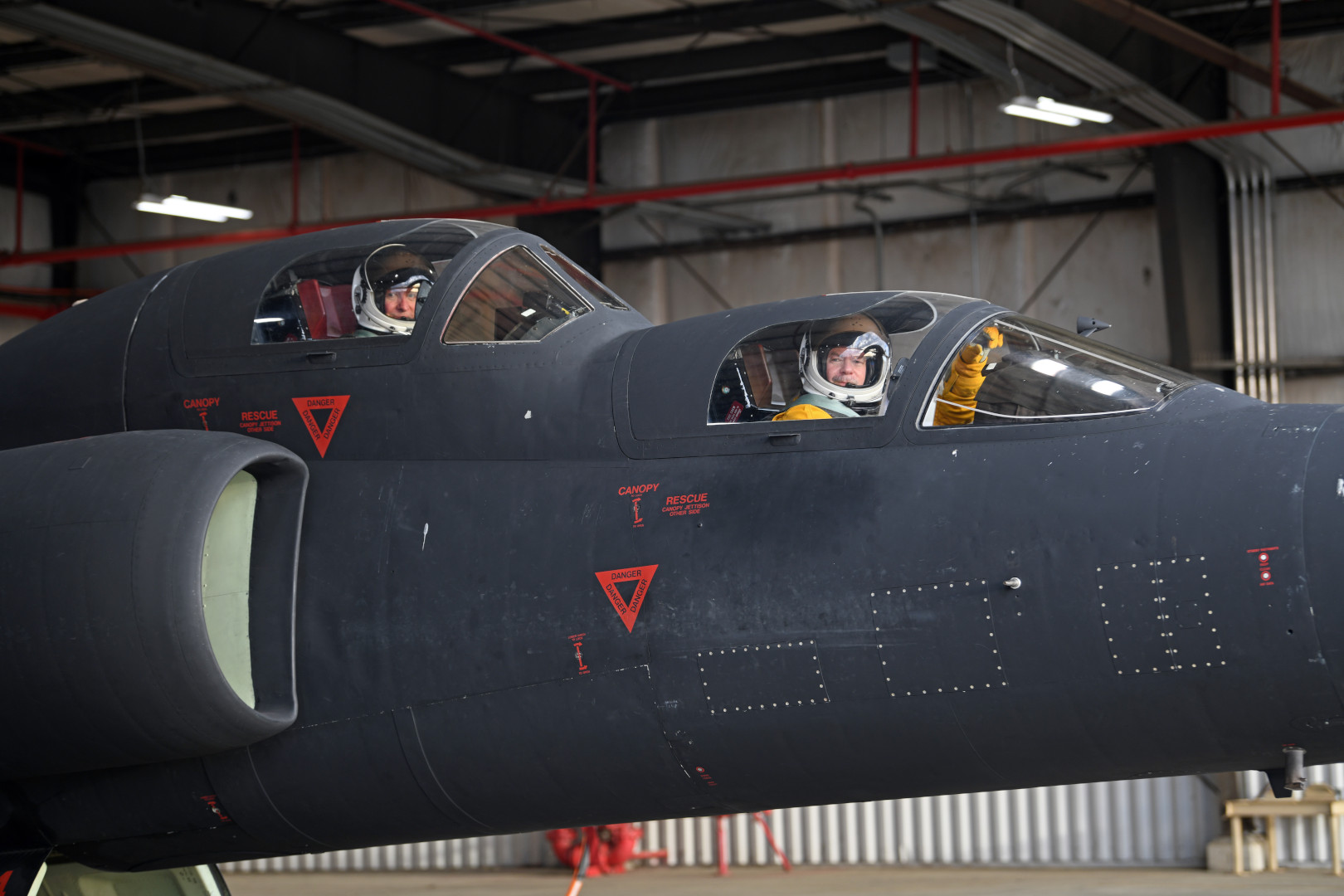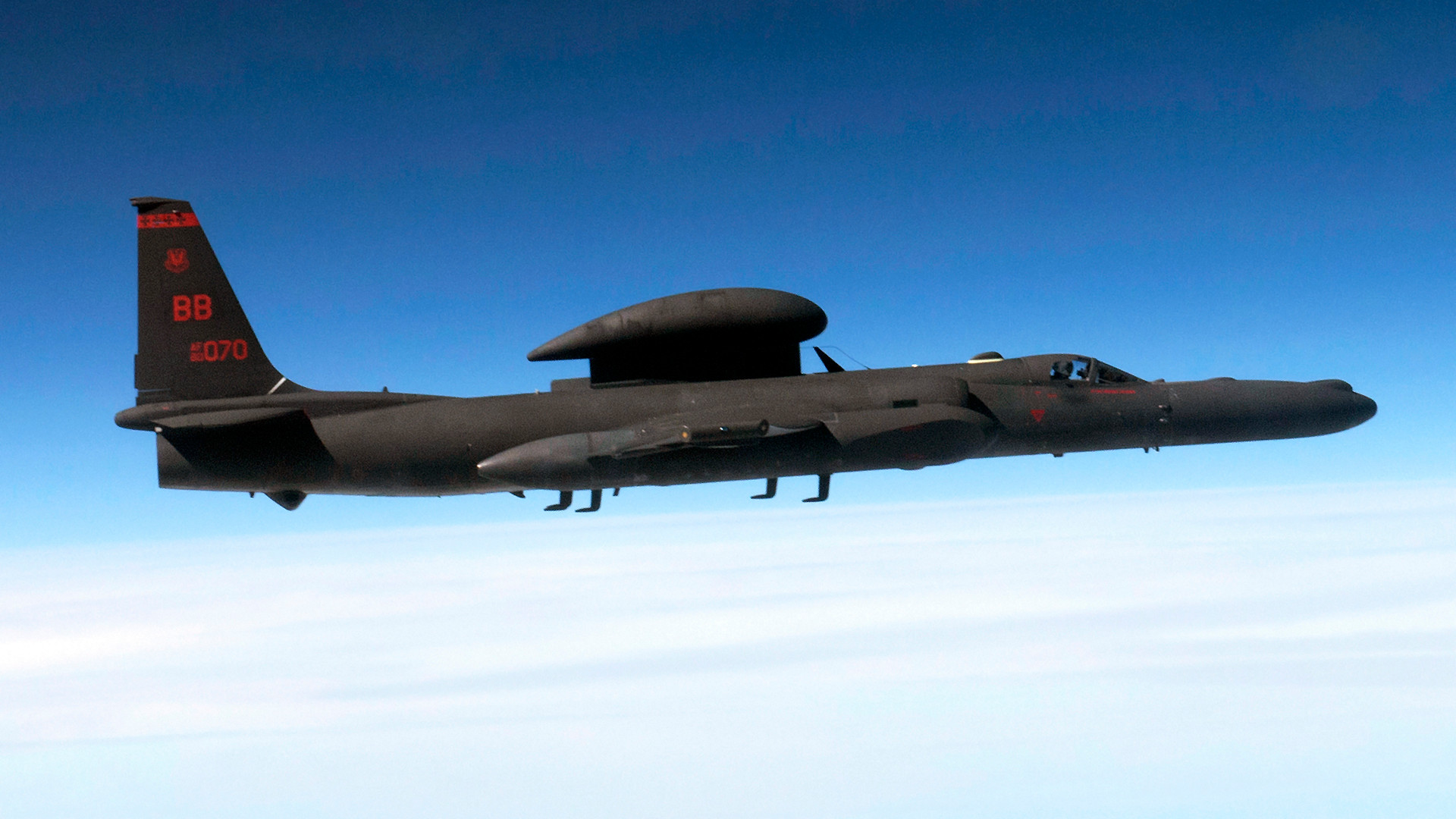A picture taken from a U.S. Air Force U-2S Dragon Lady spy plane of the Chinese spy balloon that traveled through U.S. and Canadian airspace earlier this month has emerged. As The War Zone was first to report, at least two U-2Ss were used to monitor the balloon’s flight and gather information about it before it was ultimately shot down off the coast of South Carolina.
An official high-resolution copy of this image has now been released. You can find it and The War Zone‘s analysis of what it shows in our follow-on coverage here.
Chris Pocock, a long-time aviation journalist, author, and expert on the U-2 posted the picture online today on his website Dragon Lady Today. The existence of at least one shot of the balloon taken from a Dragon Lady’s cockpit had previously been known, with CNN having previously reported that “it has already gained legendary status in both NORAD [the U.S.-Canadian North American Aerospace Defense Command] and the Pentagon.” The War Zone had previously reached out regarding the existence of the photo and has done so again to NORAD and the Air Force for more details about the image.
You can see the image in Chris Pocock’s tweet below, but you can check out the full version and read his expert take on it here.
What can be seen in the image is relatively limited, but it does immediately highlight the main reason why the U-2 was called into action in this case. The picture clearly shows the Dragon Lady flying above the balloon, with its aircraft’s fuselage casting a shadow on its white-colored envelope — an incredible composition for such a shot. U.S. officials said that the balloon stayed at altitudes between 60,000 and 70,000 feet over the course of its journey. No other aircraft in U.S. government inventory, at least that we know about, would’ve been able to get significantly on top of it and maneuver close around it, and stay aloft with it for an extended period of time.
The particular shape of the shadow seen on the balloon raises a question about whether at least one of the U-2Ss that helped keep tabs on the balloon was actually a two-seat TU-2S trainer. It’s possible that it would have been easier for the crew member in the second cockpit to take pictures with a hand-held camera while in close proximity to the high-flying balloon. We have reached out to the Air Force about this possibility, as well.

The picture also offers an all-new look at the balloon itself, including an elevated perspective of the payload suspended beneath it. U.S. officials have said that the balloon itself had a diameter of around 200 feet and that the payload may have weighed two thousand pounds or more.
A rear-view mirror is also visible in the picture to the left and the specialized helmet that goes along with the space suit-like pressure suit that U-2 pilots wear due to the high-altitude nature of their flights is seen to the right.
Details about exactly what kinds of intelligence the U-2Ss gleaned about the balloon as it passed over the United States remain unclear. “High-resolution imagery from U-2 flybys revealed that the high-altitude balloon was capable of conducting signals intelligence collection operations,” a senior State Department official said, according to Air & Space Forces Magazine. Even handheld camera images taken by U-2s from their unique perspective could have been critical to assessing the balloon’s capabilities.
In addition, powerful electro-optical cameras and radar imaging systems are, however, just some of the sensor packages that the U-2S can carry. The signals intelligence suites are available, too. The aircraft also has a robust electronic warfare suite that may have been capable of jamming any communications or datalinks on the balloon.

Regardless, being able to get on top of the balloon would have been extremely beneficial for gathering various types of intelligence. As The War Zone previously explained:
“Just surveilling it from a top-down perspective using various sensors could provide additional intelligence as to its design and capabilities. Even what could have been hidden within its envelope would have been important to find out. But most importantly, it would provide a way to intercept directional satellite communications from the balloon with greater reliability. This is a critical form of intelligence collection on such a long-range and sensor-laden device like this.”
More details about the Chinese spy balloon, its capabilities, and the U.S. government’s response to it are likely to come in the future. Work to recover the majority of the remains of the balloon from the Atlantic Ocean off the coast of South Carolina concluded on February 16, according to a statement last week issued jointly by NORAD and U.S. Northern Command (NORTHCOM).
“U.S. Navy assets assigned to U.S. Northern Command successfully located and retrieved debris from the high-altitude PRC [People’s Republic of China] surveillance balloon shot down Feb. 4, 2023,” the statement said. “[The] final pieces of debris are being transferred to the Federal Bureau of Investigation Laboratory in Virginia for counterintelligence exploitation, as has occurred with the previous surface and subsurface debris recovered.”
The Chinese spy balloon incident, as well as the subsequent shootdown of three other objects in U.S. and Canadian airspace this month, have highlighted far broader issues relating to airspace intrusions and how American authorities respond to them, as you can read more about here. The search for debris from the other three objects that were shot down has been called off and they may well never be conclusively identified due to a variety of factors.
Regardless, China’s high-altitude surveillance balloon program is real and lighter-than-air platforms have equally real military applications beyond intelligence, surveillance, and reconnaissance (ISR). That reality, something The War Zone has been calling attention to for years now, isn’t going away.
While still many questions remain about the Chinese spy balloon and its mission, the Dragon Lady community clearly has taken some of the best selfies of all time as the aircraft ran laps around the balloon like only they can.
UPDATE:
The Pentagon has now confirmed that the leaked photo of the Chinese spy balloon taken from the U-2S Dragon Lady is authentic and has said it expects to release an official version.
“I can confirm the photo’s authenticity, and we are planning to release that,” Deputy Pentagon spokesperson Sabrina Singh told reporters at a press conference on Febraury 22, 2023.
Contact the author: joe@thedrive.com
